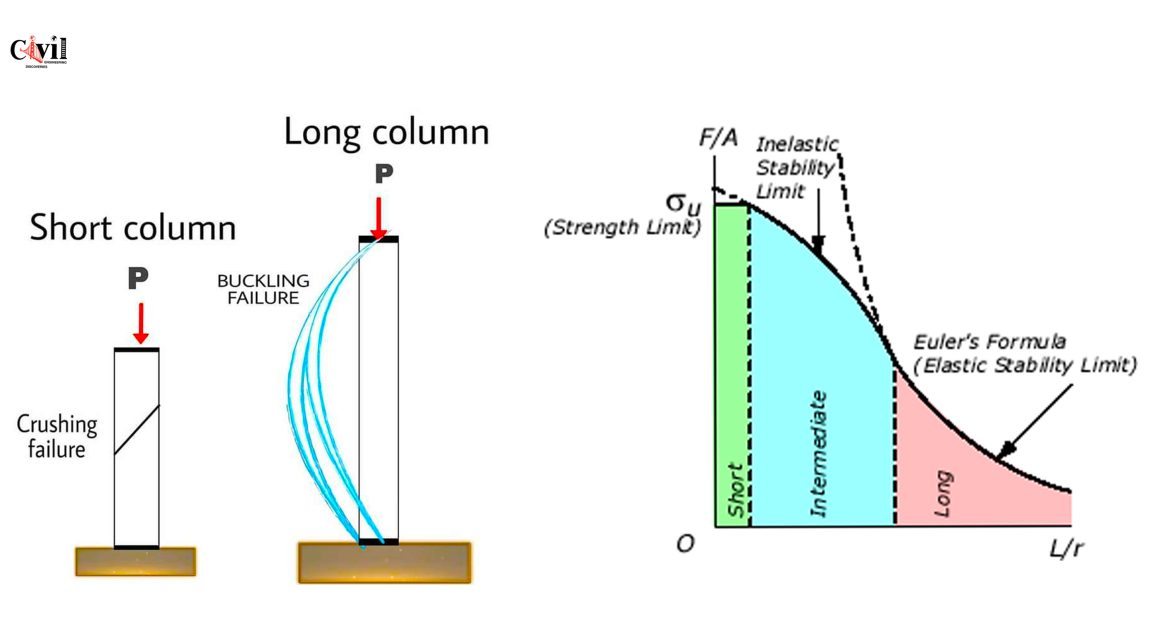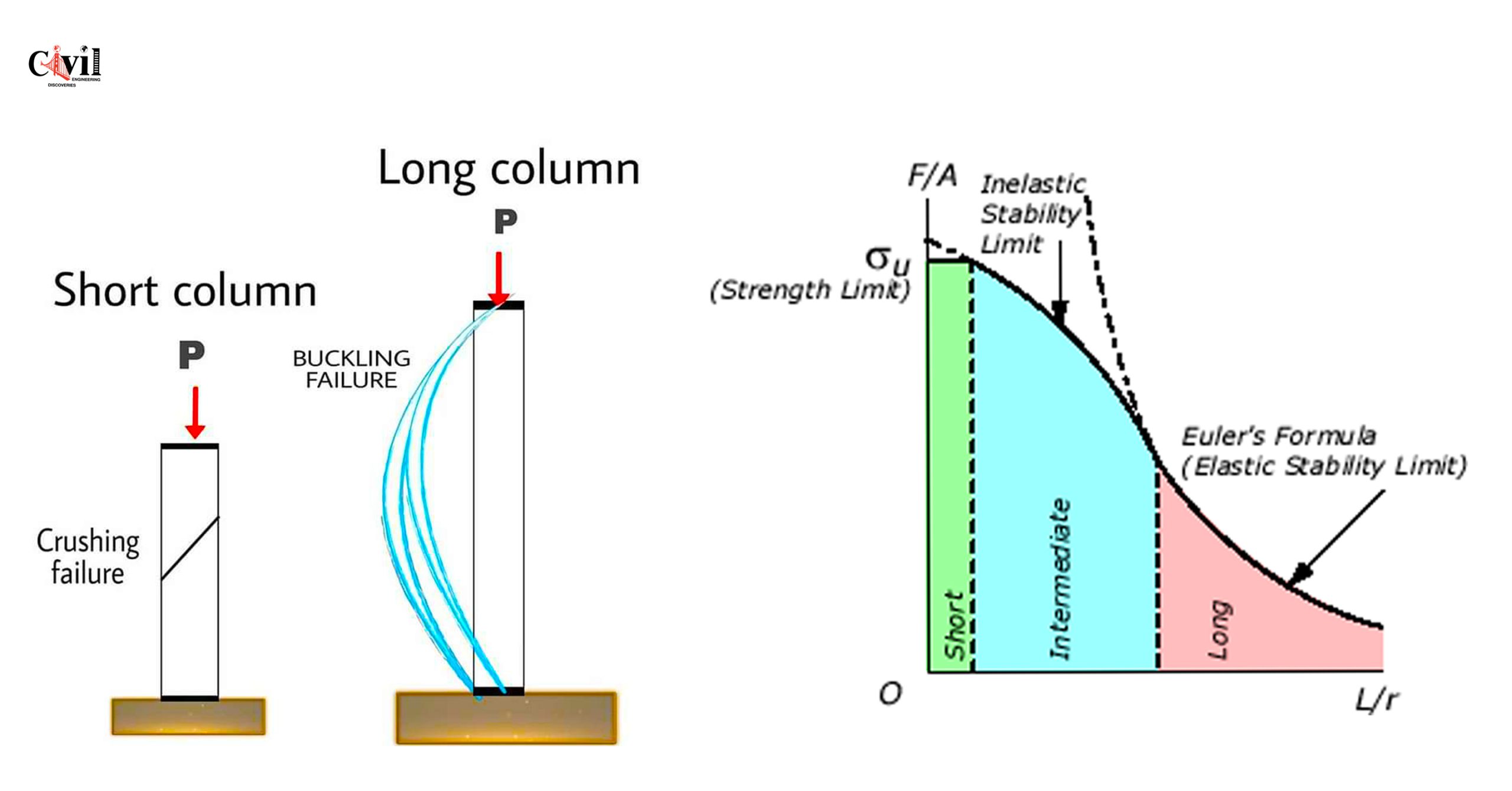Short columns and long columns are terms used in structural engineering to describe columns based on their slenderness ratio, which is the ratio of the effective length of the column to its least radius of gyration. Here’s a breakdown of the key differences between short columns and long columns:
1. Definition:
- Short Column: A short column is one in which the length (height) is relatively small compared to its lateral dimensions (such as width or diameter). It typically fails by crushing the material due to direct compressive stress.
- Long Column: A long column is one in which the length (height) is comparatively large compared to its lateral dimensions. Long columns tend to fail by buckling, which is a sudden, uncontrollable lateral deflection caused by the compressive load.
2. Failure Mode:
- Short Column: The primary failure mode of a short column is the crushing or yielding of the material under direct compressive stress.
- Long Column: The primary failure mode of a long column is buckling, where the column bends or sways laterally due to compressive forces exceeding its critical buckling load.
3. Behavior:
- Short Column: Short columns behave more like rigid bodies, transmitting load primarily through direct compression without significant lateral deflection.
- Long Column: Long columns are more flexible and can exhibit significant lateral deflection or buckling under load.
4. Design Considerations:
- Short Column: The design of short columns typically focuses on ensuring that the material strength is sufficient to resist compressive stresses without excessive deformation or failure.
- Long Column: The design of long columns must consider both the compressive strength of the material and the critical buckling load, which depends on factors such as column length, end conditions, and material properties.
5. Slenderness Ratio:
- Short Column: Short columns have a slenderness ratio (L/r) much less than the critical slenderness ratio for buckling.
- Long Column: Long columns have a slenderness ratio approaching or exceeding the critical slenderness ratio for buckling, making them prone to buckling failure.
6. Reinforcement:
- Short Column: Reinforcement in short columns is typically minimal and often used to control cracking or for other secondary purposes rather than to resist buckling.
- Long Column: Reinforcement in long columns may be designed to increase their capacity to resist buckling or to improve their ductility.
The primary distinction between short and long columns lies in their behavior under load and their failure modes, with short columns primarily failing due to direct compressive stress and long columns failing due to buckling. Design considerations and reinforcement strategies differ accordingly.
Click Here To See Basic Difference Between Main Bars And Distribution Bars In Slab








